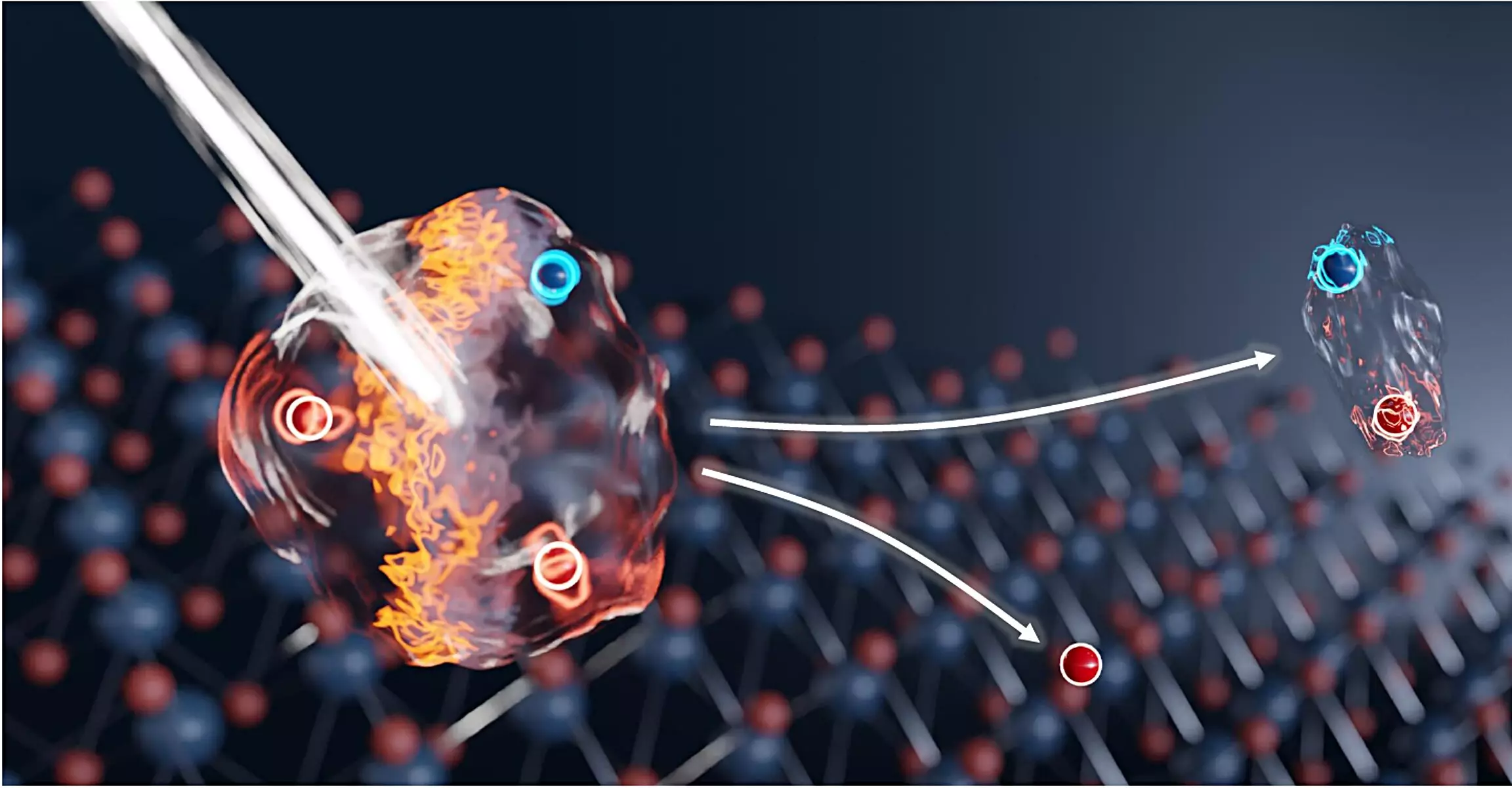In recent years, the pursuit of extremely thin materials, particularly those consisting of a few atomic layers, has captured the attention of physicists and materials scientists alike. These two-dimensional materials, known for their unique properties, hold the promise of revolutionizing a wide range of applications in electronics and quantum computing. A pioneering study led by an international research team from TU Dresden, conducted at the Helmholtz-Zentrum Dresden-Rossendorf (HZDR), has made significant strides in optimizing the switching processes between neutral and charged luminescent particles within these materials. Their findings, which highlight the potential for improved optical data processing and flexible detection technologies, were recently published in Nature Photonics.
At the heart of this groundbreaking research lies the exploration of excitons and trions—two types of quasiparticles that provide a window into the behavior of electrons in ultrathin materials. An exciton is formed when an electron, excited by energy absorption, leaves its original position, thus creating a positively charged ‘hole’. The electron and hole attract each other and become a bound state known as an exciton. When an additional electron joins this pair, it creates a trion, combining both electrical charge and significant light emission properties.
This interaction between excitons and trions presents an intriguing mechanism for potential switching processes beneficial for various applications. In experimental settings, researchers have previously been able to switch between exciton and trion states, but the speed of these transitions had limitations, hindering practical application development.
Under the guidance of Prof. Alexey Chernikov and HZDR physicist Dr. Stephan Winnerl, the team achieved a groundbreaking advancement: significantly accelerating the switching process between excitons and trions. By utilizing advanced facilities at the HZDR, particularly the FELBE free-electron laser, they were able to deliver high-intensity terahertz pulses to an atomically-thin layer of molybdenum diselenide. Upon illumination with short laser pulses, excitons were generated, which then quickly transformed into trions as they captured surrounding electrons.
The novelty of this research lies in the rapidity of the transition—taking place within just a few picoseconds, which is nearly a thousand times faster than previous electronic methods. The experimental setup’s hallmark was the precisely matched frequency of terahertz pulses, which allowed the researchers to break the weak bond between excitons and electrons, thereby creating and recombining these quasiparticles at unprecedented speeds.
The implications of this work extend far beyond theoretical physics. The ability to switch between excitons and trions rapidly opens the doorway to numerous research avenues focused on complex electronic states and advanced material platforms. These developments could facilitate the discovery of unusual quantum states of matter arising from significant interactions between multiple particles, paving the way for room-temperature applications.
Furthermore, the researchers envision novel uses in sensor technology and optical data processing. The potential for creating new types of modulators capable of rapid switching is particularly exciting. When combined with the ultrathin crystals, this could lead to the development of compact components that permit electronic control of optically encoded information, making significant strides toward efficient optical communication systems.
One of the more ambitious applications of their findings could be the creation of advanced detectors for terahertz radiation. As the researchers envisaged, such detectors would be adjustable across a broad frequency spectrum and could potentially manifest as terahertz cameras equipped with numerous pixels. Remarkably, the transition from trion to exciton involves distinctive changes in the emitted near-infrared light wavelength, making the detection and visualization of the resulting signals both feasible and straightforward to implement with existing technology.
This research illustrates the power of interdisciplinary collaboration, with contributions from teams across Marburg, Rome, Stockholm, and Tsukuba. The engaged efforts of various researchers showcase a shared commitment to push the boundaries of science and technology. As we progress, the work conducted by this international team signals a significant leap forward in our understanding and exploitation of ultrathin materials, heralding an era of enhanced electronic devices, flexible imaging technologies, and unprecedented quantum applications.
The experimental advancements in the switching processes of luminescent particles within ultrathin materials illustrate a pivotal moment for both scientific inquiry and practical technological applications. As research continues to evolve, the dual capabilities of electronic and optical control inherent in excitons and trions could lead to transformative developments, not only enhancing our understanding of quantum materials but also revolutionizing how we connect and process information in the digital age.


Leave a Reply